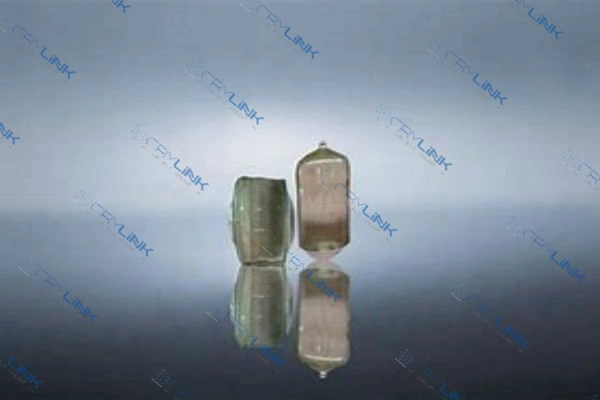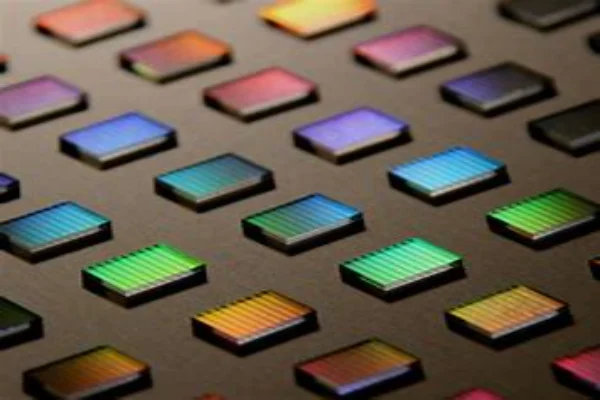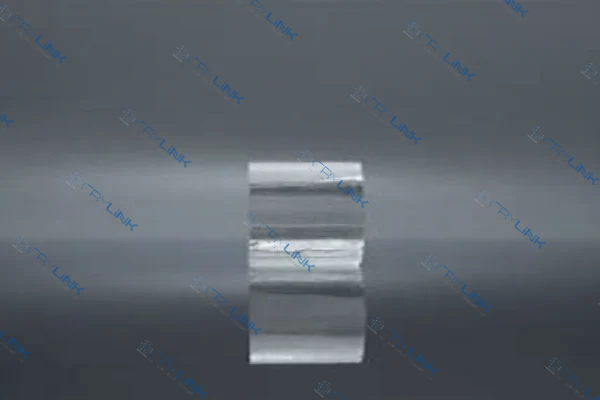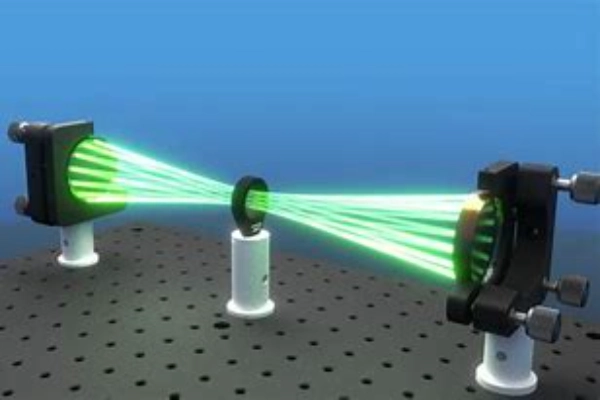Introduction
In the realm of optics and photonics, nonlinear crystals play a pivotal role in harnessing and manipulating light in ways that linear materials cannot. These crystals exhibit properties that allow them to interact with light in unique manners, leading to phenomena such as frequency doubling and optical parametric oscillation. In this comprehensive guide, we delve deep into the fundamental principles of nonlinear crystals and their applications in modern technology.

Understanding Nonlinear Optics
Understanding nonlinear optics requires delving deep into the intricate dance between light and matter. At its core, nonlinear optics is concerned with the interactions of light with materials that don’t follow the usual linear rules. In simpler terms, while linear optics can be thought of as a predictable, straight-line response to light, nonlinear optics is where things get interesting, unpredictable, and, in many ways, more powerful.
In the realm of linear optics, the behavior of light is straightforward. Shine a light on a material, and the material’s response—be it reflection, refraction, or absorption—is directly proportional to the intensity of that light. It’s a one-to-one relationship, much like pushing a swing: the harder you push, the higher it goes, in a predictable manner.
However, nonlinear optics introduces a twist to this narrative. Here, the material’s response to light is not just proportional to the light’s intensity. Instead, it can be influenced by the intensity in more complex ways, leading to quadratic, cubic, or even higher-order responses. This means that the outcome isn’t always directly predictable from the input. It’s akin to pushing a swing and sometimes having it move in unexpected patterns, not just the straightforward back-and-forth we’re used to.
But what causes this nonlinear behavior? The answer lies in the microscopic world of electrons. Electrons, which orbit the nuclei of atoms, are responsible for most of the optical properties of materials. In linear optics, these electrons respond in a straightforward manner to incoming light. However, when the intensity of the light becomes particularly high, these electrons can be jostled out of their usual orbits. This displacement from their equilibrium positions can lead to changes in the material’s properties, such as its refractive index.
Imagine a calm sea, where waves (representing light) gently lap against the shore. The shoreline’s response (representing the material) is predictable. Now, imagine a storm, with massive waves crashing with great intensity. The shoreline might erode, shift, or change in response. This is analogous to the nonlinear response of materials to intense light.
In essence, nonlinear optics opens up a world of possibilities, allowing for the manipulation of light in ways that linear optics can’t achieve. From generating new frequencies of light to enabling advanced communication technologies, the study of these nonlinear interactions holds the key to many technological advancements.

Key Phenomena in Nonlinear Optics
The world of nonlinear optics is replete with fascinating phenomena that have revolutionized the way we understand and manipulate light. Among these, frequency doubling and optical parametric oscillation stand out as two of the most intriguing and impactful.
Frequency doubling, or second harmonic generation (SHG), is akin to a symphony where two identical musical notes come together to produce a new note that’s an octave higher. In the realm of light, this translates to two photons, particles of light, with the same frequency joining forces within a special material known as a nonlinear crystal. As they interact within this crystal, they merge to birth a new photon.
This newborn photon is special; it possesses twice the frequency and, consequently, half the wavelength of its parent photons. This ability to double the frequency of light has profound implications. For instance, it allows scientists and engineers to create green light from infrared lasers, a transformation that’s vital in various technological applications, from laser displays to medical procedures.

On the other hand, optical parametric oscillation (OPO) is a process that seems to defy the very nature of light. Imagine a single photon entering a nonlinear crystal and, instead of passing through unchanged, it divides, almost magically, into two distinct photons, each with its own unique frequency. It’s as if a single musical note, upon entering a special chamber, splits into two separate notes.
This phenomenon is not just a mere splitting; it’s a precise division where the energy of the original photon is conserved, distributed between the two new photons. The beauty of OPO is its versatility. By tweaking the properties of the nonlinear crystal and the incoming light, one can generate a vast spectrum of frequencies from a single input. This capability is invaluable in areas like spectroscopy, where researchers need a wide range of light frequencies to study various materials.
Both SHG and OPO are testament to the power and potential of nonlinear optics. While at first glance, they might seem like mere scientific curiosities, their real-world applications are vast and varied. From enhancing the resolution of microscopes to enabling secure communication channels, these phenomena are at the heart of many technologies that shape our modern world.
In essence, nonlinear optics, with its array of captivating phenomena, offers a deeper understanding of light’s interactions with matter. It challenges our conventional wisdom, introduces novel concepts, and provides tools that have the potential to redefine the boundaries of science and technology.

The Role of Nonlinear Crystals
The role of nonlinear crystals in the world of optics is akin to that of a maestro in an orchestra, guiding and shaping the behavior of light in ways that are both intricate and profound. These crystals stand out not just because of their ability to interact with light, but due to the distinct characteristics they possess.
At the heart of a nonlinear crystal’s uniqueness is its structural symmetry. Unlike regular crystals that may have inversion symmetry, nonlinear crystals lack this feature. Inversion symmetry refers to the property where a crystal remains unchanged even when its spatial coordinates are inverted. The absence of this symmetry in nonlinear crystals is what makes them special. It allows them to exhibit second-order and higher nonlinear optical effects, which are otherwise forbidden in crystals with inversion symmetry.
Furthermore, the internal lattice structure of these crystals plays a pivotal role in determining their nonlinear properties. The arrangement of atoms and molecules, the bonds between them, and the overall spatial configuration contribute to the crystal’s ability to modify light in nonlinear ways. This structural uniqueness ensures that when light, especially high-intensity light, passes through these crystals, it undergoes changes that wouldn’t be possible in regular crystals.
Moreover, the inherent properties of nonlinear crystals, such as their refractive indices and phase-matching conditions, are tailored to optimize the efficiency of nonlinear processes. This optimization ensures that phenomena like frequency doubling or optical parametric oscillation occur with maximum efficiency, making these crystals invaluable in various technological applications.
In essence, nonlinear crystals are nature’s marvels, crafted meticulously over eons, possessing the perfect blend of structural and optical properties to command and control the behavior of light in ways that challenge our conventional understanding and open doors to new technological horizons.

Applications of Nonlinear Crystals
Nonlinear crystals, with their exceptional ability to manipulate light in ways that standard materials cannot, have carved a niche for themselves in numerous technological domains. Their applications span across industries, bringing about advancements that were once thought to be the stuff of science fiction.
In the realm of laser technology, nonlinear crystals are indispensable. Lasers, as powerful as they are, have limitations in terms of the spectral regions they can access. This is where nonlinear crystals come into play. By facilitating processes like frequency doubling, these crystals can convert laser light into frequencies that the original laser source couldn’t produce directly. For instance, a laser emitting in the infrared range can be transformed into one emitting visible green light. This frequency conversion is crucial in various applications, from entertainment in laser light shows to precision tasks in manufacturing and material processing.
The telecommunications industry, especially optical fiber communication, also benefits immensely from nonlinear crystals. As data travels through optical fibers in the form of light pulses, there’s a need to process this light to ensure efficient and error-free communication. Nonlinear crystals assist in signal processing and wavelength conversion, ensuring that data can be transmitted over long distances without degradation. Moreover, with the ever-increasing demand for faster internet speeds and higher bandwidth, the role of nonlinear crystals in enhancing the capacity and efficiency of optical communication systems becomes even more paramount.
Medical imaging, a field where precision and clarity are of utmost importance, has also been revolutionized by nonlinear crystals. Techniques like two-photon microscopy rely on these crystals to produce high-resolution images of biological specimens. Unlike traditional microscopy, which might be limited in terms of depth penetration and resolution, two-photon microscopy, powered by nonlinear crystals, can peer deeper into tissues, providing detailed insights at the cellular and even molecular level. This has proven invaluable in research, diagnostics, and understanding intricate biological processes.
In conclusion, nonlinear crystals, though tiny and unassuming, are powerhouses that drive many modern technologies. Their ability to interact with light in non-traditional ways has opened doors to innovations and advancements that continue to shape and redefine multiple industries.
Conclusion
Nonlinear crystals stand as a testament to the marvels of optical science, enabling technologies and applications that were once deemed impossible. By understanding the fundamental principles behind these crystals and their role in nonlinear effects, we can continue to push the boundaries of what’s achievable in the realm of photonics.
Frequently Asked Questions (FAQs)
- 1. What makes a crystal nonlinear?
Nonlinear crystals lack inversion symmetry, which allows them to exhibit nonlinear optical effects. - 2. Can all crystals be used for frequency doubling?
No, only specific nonlinear crystals with the required symmetry properties can be used for frequency doubling. - 3. How is optical parametric oscillation different from frequency doubling?
While frequency doubling combines two photons to produce one with twice the frequency, optical parametric oscillation splits a photon into two photons with different frequencies. - 4. Are nonlinear effects harmful?
Nonlinear effects in themselves are not harmful. However, the high intensities of light required to produce these effects can be harmful if not handled properly. - 5. Can nonlinear optics be observed in everyday life?
While the effects of nonlinear optics are typically observed under specialized conditions, some phenomena, like the green color of underwater marine life seen in deep-sea diving, can be attributed to frequency doubling of sunlight in water.

Frank
Frank graduated from the University of Shanghai for Science and Technology, majoring in optics. As a technical engineer at Crylink Company, he deeply understands crystal materials and laser components.
Related Video(s) with this Article
Related Product(s) with this Article
Related Application(s) with this Article
